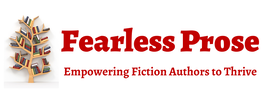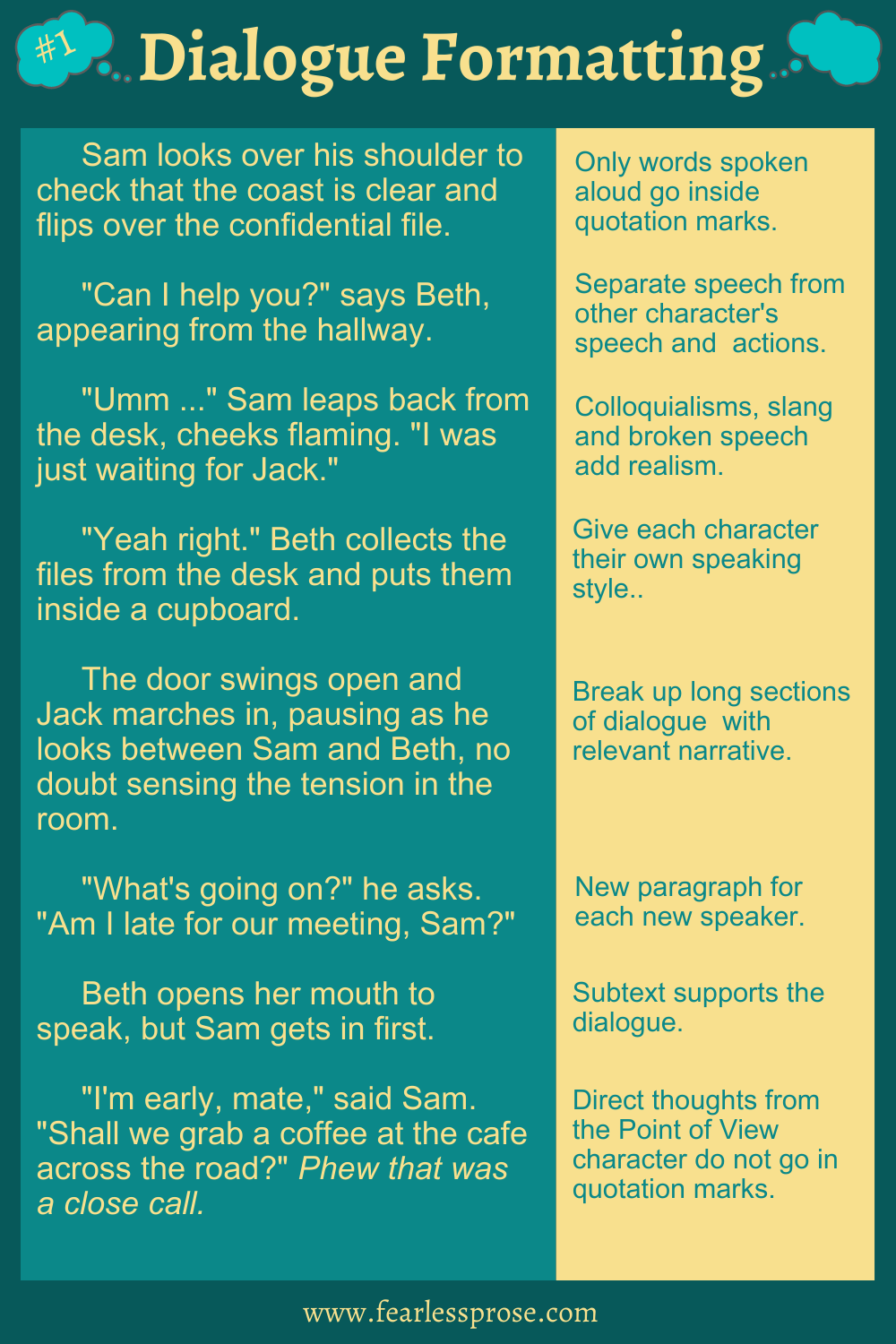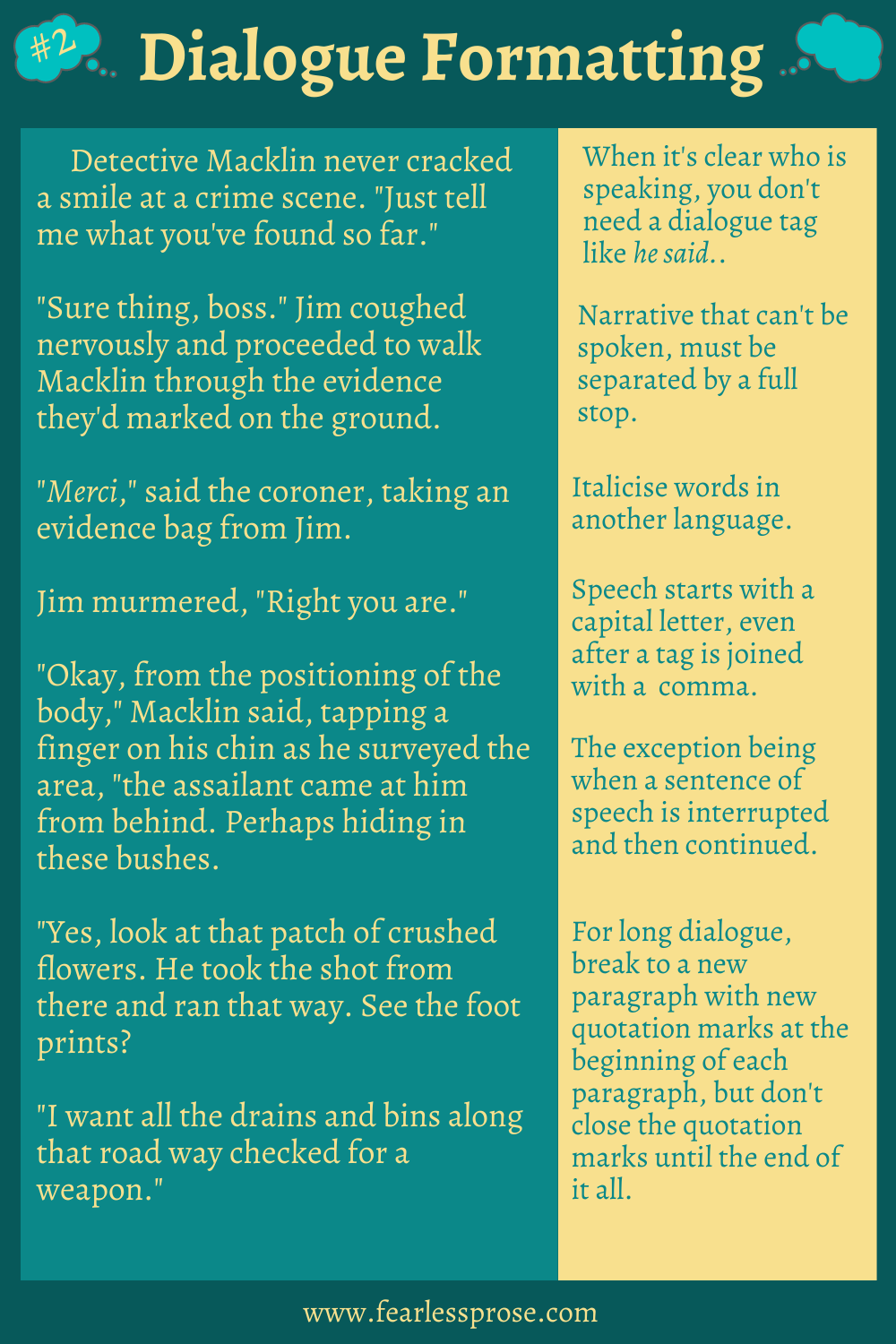|
Author: Sandy Vaile Previously published on the Writers in the Storm blog on 3rd August 2023. Dialogue in fiction stories is a reliable way of bringing characters to life and immersing readers in their lives, but for it to be effective, it needs to be understood. As Michel de Montaigne said in his essay, On the Art of Conversation, The most fruitful and natural exercise of the mind … is conversation.” It stimulates thinking, engages facial expressions and has the magic to convey complex ideas to others. In fact, we were communicating verbally long before we decided to write down ideas. Engaging conversations that add value to narration, need to:
Dialogue doesn’t include private thoughts, dreams or narration. Make it clear who is speakingIt’s important that readers can easily determine who is speaking, so they can follow the conversation and don’t get the wrong impression of what’s going on in the story. Ambiguity can lead to misinterpretation, but this can be prevented by:
Continue reading ... Clear paragraph deliniationThe dialogue (and attached narration) for one character must be put into a separate paragraph. Clear dialogue tagsHere are some tips for using dialogue tags effectively:
For example: “How dare you,” Jane said indignantly. [‘Indignantly’ is the adverb, which is telling readers how this character feels.] “How dare you!” Jane snapped, a tide of angry red rising up her neck and cheeks. [‘Snapped’ is a stronger verb that tells readers how Jane spoke, and then I’ve added a description of what her physical reaction looks like to the Point of View character.
You can also use thoughts, actions, body language, facial expressions and thoughts by the Point of View character in the surrounding narration, to not only make it clear who is speaking, but how they feel about it and what else they’re doing. For example: “Um, I don’t know what you’re talking about.” His face flushed and gaze darted towards the exit. “Like hell,” Jane said, stalking towards him with clenched fists.
How to handle multiple speakersOf course, things become more complicated when there are three or more characters participating in a conversation. When there’s a crowd:
Correctly format and punctuate dialogueJoining dialogue to tagsDialogue should only be joined to a tag with a comma if the tag is something that can actually be said, e.g. he said, she whispered, he yelled, she mumbled.
If the tag can’t be said, then you must use a full stop to separate them, e.g. he grunted, she waved, he chewed on his lip, she glanced around the room.
PunctuationThe punctuation related to dialogue goes inside the quotation marks, except when em dashes are used like brackets for non-spoken narrative that breaks dialogue (see the example below), or the tag is situated before the dialogue.
CapitalisationThe beginning of a dialogue sentence should be captialised, even if there was a tag before it.
Tags that are joined to dialogue with a comma because they can be spoken, are not capitalised unless they are a proper noun; even if the dialogue ends with an exclamatioin or question mark.
Quotes within quotesWhen quoting someone within dialogue, use a different style of quotation mark, e.g. if you’re using double quote marks, then change to single, or if you’re using single quote marks, change to double.
Download and keep the handy examples below. When interupting the flow of dialogue
“I just can’t believe I forgot to bring it,” Sally said. “I even wrote a note to remind me.” “I just can’t believe I forgot to bring it,” Sally said, “after writing a note and everything.” “I just can’t believe I fogot to bring it,” —Sally was flustered as she searched her handbag for the offending envelope— “after writing a note and everything.
When you have a long passage of dialogue
“[Paragraph of dialogue that will continue in the next paragraph has no closing quotaion marks.] “[Each subsequent paragraph of dialogue has opening quotation marks.] “[The final paragraph of dialogue has closing quotation marks.]" A couple of warnings
“Hi Sally, it’s great to see you.” “You too Jane. How has your week been?” “Fabulous, Sally.”
“Hi Jane. As you know I’m a horse-riding instructor and got my certificate in 2015. What do you do for a living?” [Awkward. People just don’t talk to one another like that.] But look at the same information revealed using a more conversational tone: Jane picked up the photo of a younger Emily atop an impressive black horse. “Wow, I didn’t know you rode.” “For years.” Emily said. “Actually, I’m a riding instructor. Got my certificate just last year. What do you do for a crust?” Bonus tip for quotation marksI recommend authors use double quotation marks (“) no matter where they are planning to submit their work, because it provides flexibility.
It’s easy to use the Find and Replace function to replace all double quotation marks with singles. However, if you have used single quotation marks, the Find feature will pick up all of the apostrophes too, so you’ll have to manually change each one. Tedious! Your fiction stories will ultimately benefit from succinct, purposeful, authentic and well formatted dialgogue, because those things enable readers to easily understand what’s being said, by whom. They also bring the narrative to life by immersing readers in characters’ lives and moving the plot forwards. If you are stuck in a rut of writing novels you never finish, never submit or aren’t sure how to fix, then it’s your lucky day. Join Sandy Vaile's Facebook community for heaps more tips, resources and free events.
2 Comments
17/5/2024 07:08:19 am
I find this an extremely comprehensive and useful article which I believe will be useful to many.
Reply
17/5/2024 09:57:13 am
I'm so glad you enjoyed the article, Roger, and appreciate you taking the time to leave your thoughts.
Reply
Your comment will be posted after it is approved.
Leave a Reply. |
Fearless ProseEmpowering aspiring authors to confidently write novels they're proud to publish Categories
All
Archives
May 2024
|
© Sandy Vaile 2012-2024 |
Contact and Privacy Policy - About Sandy |





 RSS Feed
RSS Feed